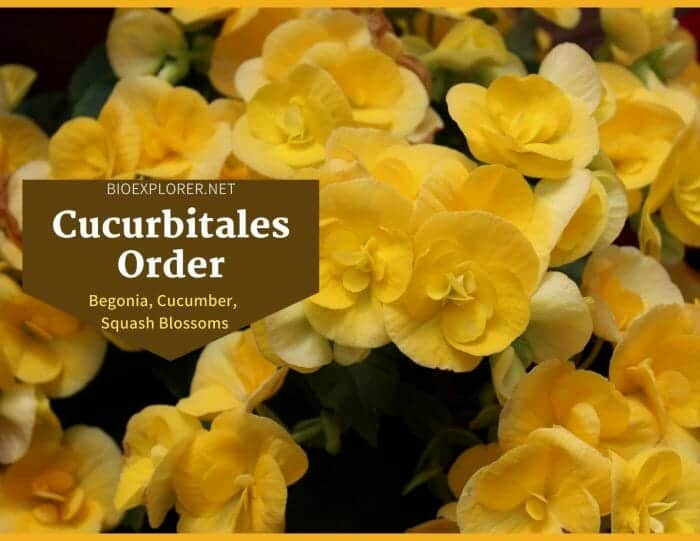
The Cucurbitales[1] are an order of flowering species listed in the rosid group of dicotyledonsWhat is dicotyledons?Angiosperm with two cotyledons. Cotyledon is seed leaf; the first leaf (or set of leaves) to appear during the early development of a seedling.. The species of this order are primarily distributed in tropical regions, with only a few species found in subtropic and temperate regions.
The order consists of shrubs, trees, herbs, and climbers. A distinguishing characteristic of the Cucurbitales is the presence of usually pentacyclic, unisexual flowers with thick pointed petals (when present). Insects usually pollinate the flowers, but wind pollination may also occur, as seen in Coriariaceae and Datiscaceae.
Cucurbitales Distribution
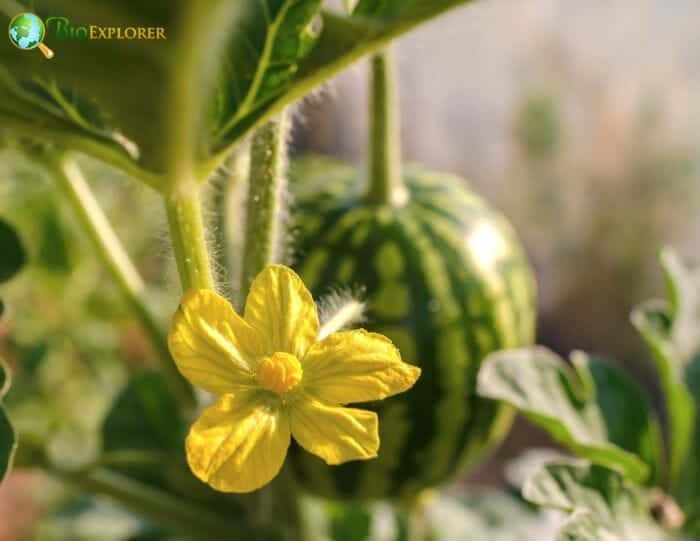
- Begoniaceae or the Begonia family grows in tropical or warm regions worldwide. This family holds economic importance as a source of cultivated ornamentals. For instance, the genus Begonia has thousands of hybrids and cultivars used as garden plants and houseplants year-round.
- Cucurbitaceae or the Cucumber/Gourd family almost worldwide but grows mainly in tropical areas. As a source of food crops such as C. melo (melons), C. lanatus (watermelon), C. sativa (cucumber), and other species (squashes, pumpkins), the species in this family play an important role in economy. In addition, several species yield dried fruits that are used as gourds. Also, the dry fruits of Luffa (luffa) are used as a sponge. A few taxa have horticultural or medicinal uses as well.
- Corynocarpaceae comprises a single genus, Corynocarpus, consisting of six evergreen trees distributed from New Guinea to New Zealand and in the western Pacific Ocean.
- Coriariaceae have a disjunct distribution, with most species growing from South Pacific to China, the Himalayas, and the Mediterranean.
- Apodanthaceae can be found in the New World in Southwestern U. S.A., Southwestern Asia, Southwestern Australia, and Eastern Africa.
- Anisophylleaceae consists of evergreen trees or shrubs that grow throughout the tropics.
- Datiscaceae consist of perennialherbs contained in a single genus, Datisca. There are only two species of Datisca, of which one can be found in western North America, and the other is distributed from Crete to India.
- Tetramelaceae have two genera, Tetramelesand Octomeles, consisting of Indo-Malesian trees. Both genera, especially the Octomeles, are large trees that grow fast. Their softwood is used to make canoes.
![]()
Cucurbitales characteristics
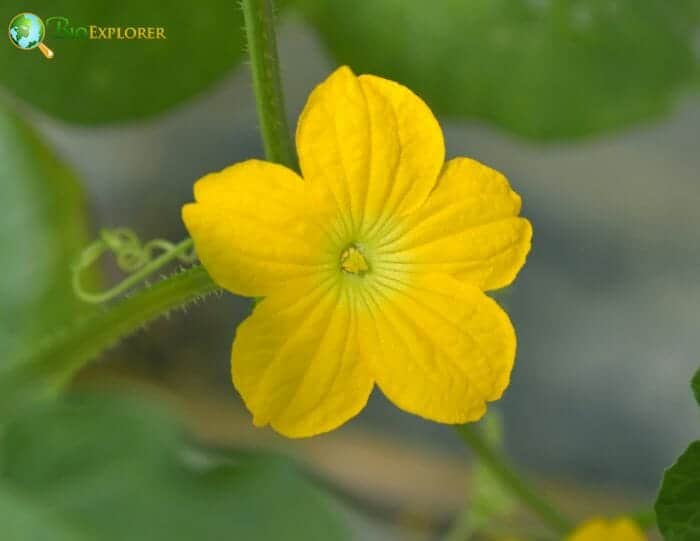
Species in this order tend to have the following characteristics:
- The veins in the leaf radiate from the base.
- The sepals and petals are mostly not that different.
- The styles are free.
- Many species have inferior ovaries.
- Male and female flowers are distinguishable, although they usually exist on the same plant.
Let’s look at the distinct features of each family of the Cucurbitales.
![]()
Begoniaceae Characteristics
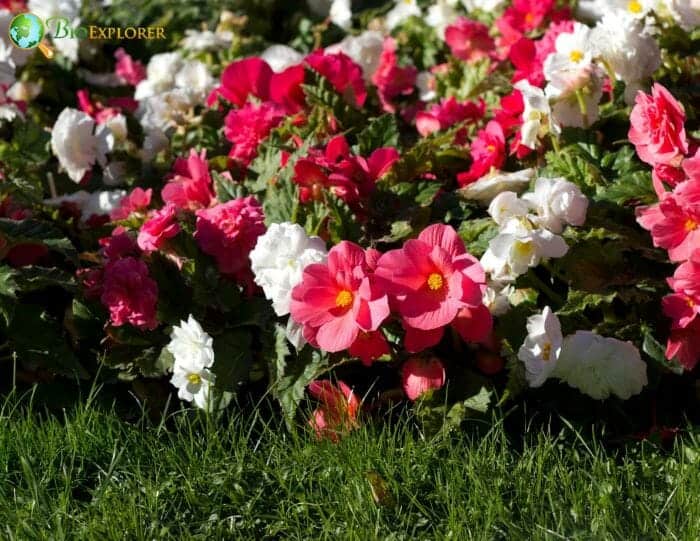
The Begoniaceae are mostly monoeciousWhat is monoecious?Pertaining to plants, individuals of which bear both staminate and pistillate flowers, but not necessarily perfect flowers. herbs or shrubs that have the following features:
- Presence of tuberous to fibrous roots and usually succulent stems.
- Mainly simple, oblique-asymmetrical, or palmately lobed to compound leaves.
- Axillary and cymose inflorescence.
- The male flowers usually have 2+2 valvate tepals.
- The female flowers usually have 5 [5+5], imbricate tepals, inferior ovary (half-inferior), usually winged, 2-3 [-6] carpels, and locules containing several ovules/seeds.
- The fruit is a capsule or a berry.
![]()
Cucurbitaceae Characteristics
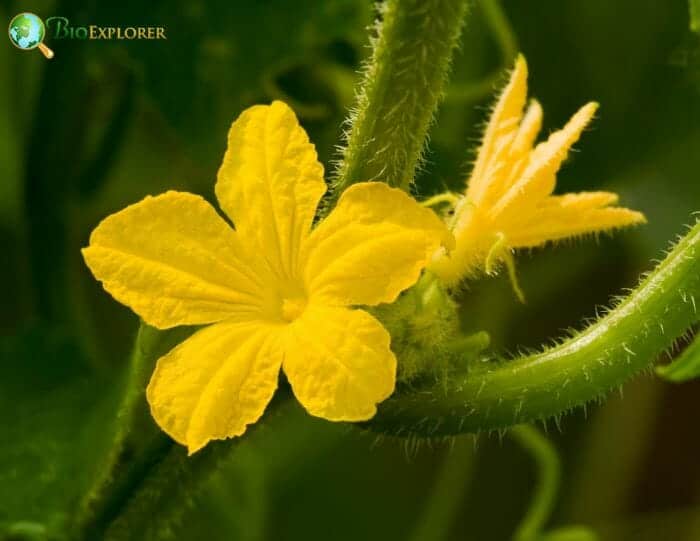
The Cucurbitaceae are monoecious or dioeciousWhat is dioecious?Pertaining to plants, individuals of which bear either staminate or pistillate flowers, but not both., rarely hermaphroditic vines that are rarely tree-like. The following characteristics are commonly observed in Cucurbitaceae:
- Mostly, there is one tendril per node.
- Simple leaves are palmately veined and/ or lobed, usually with tendrils.
- The female flowers are epiperigynous, mostly having parietal placentation and three carpels.
- The fruit is pepo, berry, capsule, or samara.
![]()
Anisophylleaceae Characteristics
Anisophylleaceae do not have a very distinguishable appearance.
- The leaves are primarily coriaceous, yellow, entire, drying, and mostly asymmetric at the base.
- Sometimes the leaves are anisophyllous.
- Small flowers with an inferior ovary.
![]()
Corynocarpaceae Characteristics
Corynocarpaceae can be recognized by their flowers that have the following features:
- Very distinctive, small flowers with stamens positioned opposite to the petals.
- Stamens alternate with fringed staminodes.
- The ovary usually contains a single style.
- Vegetatively the family is not that distinctive.
- Spirally-arranged leaves with intrapetiolar stipules that are not so prominent.
- The lamina has entire margins.
- The plant is poisonous and possesses bitter glucosides.
![]()
Coriariaceae Characteristics
Coriariaceae can be recognized by the following characteristics:
- Entire, Opposite, sessile leaves have veins that emerge from the base and at most minute stipules.
- Many branches resemble compound leaves, having limited growth.
- The inflorescences are racemes.
- The flowers’ biseriate perianth is poorly differentiated.
- The carpels are connate only basally in most cases.
- The fruits are achenes surrounded by the accrescent corollaWhat is corolla?A collective term referring to the petals of a flower. with long, subbasal styles that remain attached.
![]()
Apodanthaceae Characteristics
Apodanthaceae grow as groups of relatively small, sessile flowers on the stems of their host.
- The flowers’ perianth is free and mainly spreading.
- Conspicuous stamen that is mound-like is present in the center of staminate and carpelate flowers.
- The ovary is inferior.
![]()
Datiscaceae Characteristics
Datiscaceae typically have the following characteristics:
- The leaves are separated to pinnately compound.
- The flowers are of two sexes and have npetals.
- The styles appear near the margin of the inferior ovary instead of the center.
- The ovules are borne on the ovary’s walls.
- The fruit is a capsule.
- Nitrogen-fixing Frankia fungi live in the roots of Datiscaplants.
- Wind aids both seed dispersal and pollination.
- The seeds have a small lid, but a ring of specialized cells is not present around it, as in Begoniaceae.
![]()
Tetramelaceae Characteristics
Tetramelaceae have the following features:
- Male and female flowers are borne on different trees and grow on pendulous spikes.
- The ovary is inferior, and the ovules emerge on the ovary’s walls.
- The short styles grow in a ring near the ovary’s edge.
- The fruit is a capsule that yields small seeds.
![]()
Cucurbitales Example species
- D. cannabina is an ornamental cultivated for its foliage, and it also produces a yellow dye.
- C. sativa is a creeping plant species of Cucurbitaceae that is widely cultivated for its edible fruit, cucumber.
- C. pepo produces varieties that yield squash, zucchini, pumpkin, and ornamental gourds.
![]()











